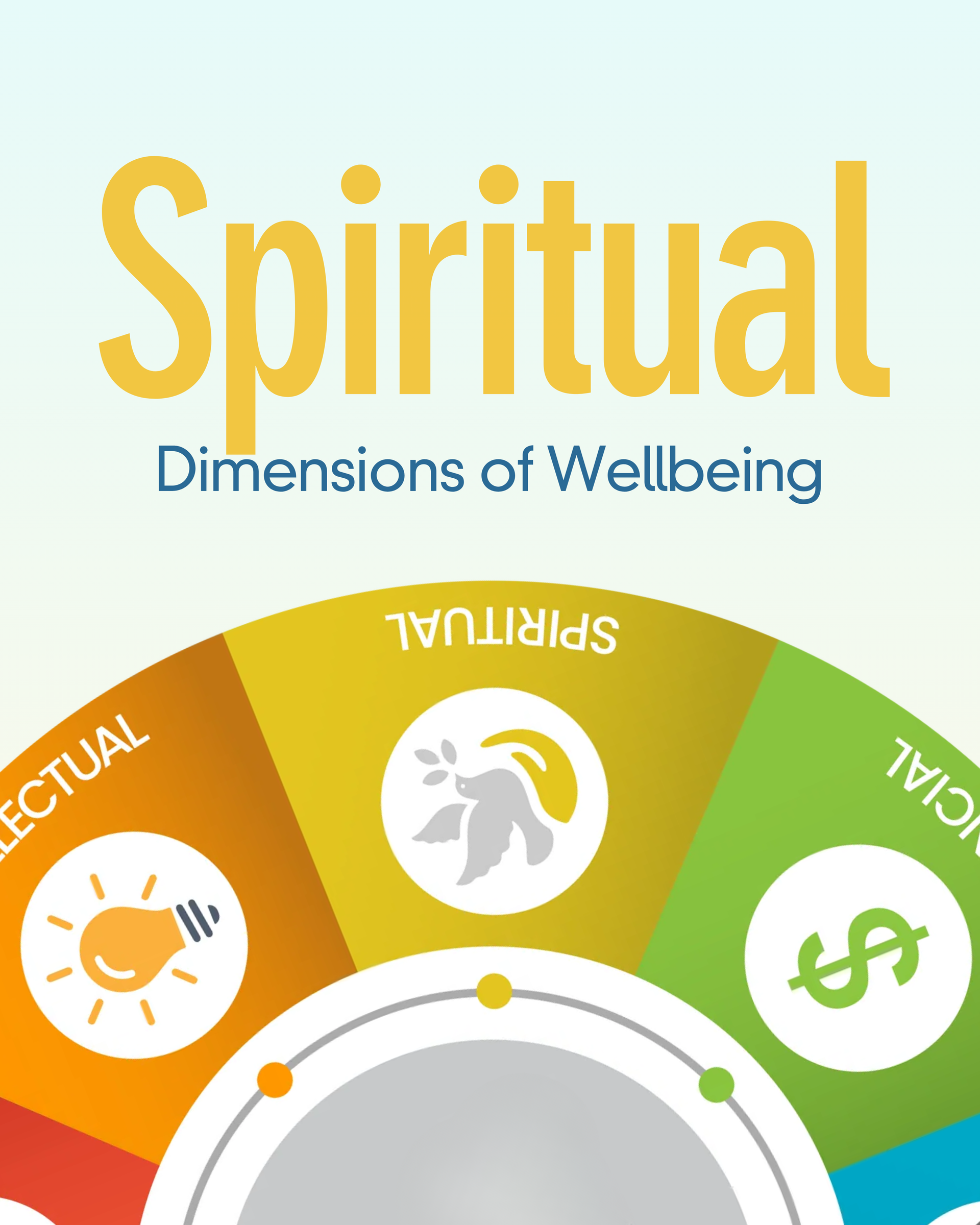The 8 Dimensions of Wellbeing: Spiritual Wellbeing

When we talk about your “wellbeing” as a college student, we’re talking about more than having a good attitude or hitting the gym. Wellbeing is made up of eight interconnected dimensions that shape how we feel, function, and live. These include emotional, physical, social, intellectual, spiritual, environmental, occupational, and financial wellbeing. When one area is off, it can affect all the others.
In this post, we’re taking a closer look at the fifth dimension: Spiritual Wellbeing.
What Is Spiritual Wellbeing?
Spiritual wellbeing is about meaning, purpose, and connection to yourself, others, and sometimes something bigger than you. It doesn’t have to be tied to religion (although it can be). Rather, it concerns maintaining alignment with your core values and taking the time to thoughtfully consider what is genuinely important to you.
This dimension helps you navigate the big questions:
Who am I? Why am I here? What do I believe in? What kind of life do I want to live?
To that end, spiritual wellbeing provides a sense of inner stability especially in uncertain or challenging times. When you’re connected to your values and purpose, it becomes easier to make choices, set boundaries, and find direction.

How Spiritual Wellbeing Shows Up
Spiritual wellbeing can be quiet, but it’s powerful. It often shows up in how you move through your day and how you relate to yourself and the world around you. Signs this area is in a healthy place might include:
- You feel a sense of purpose in your daily routines, studies, or relationships.
- You regularly reflect on your values and whether your actions align with them.
- You make time for stillness, mindfulness, or practices that help you feel centered.
- You’re open to exploring big questions without needing all the answers.
- You feel connected to something greater than yourself (whether that’s a faith tradition, a cause, nature, or a general sense of wonder about the world).
You don’t need to have everything figured out to have spiritual wellbeing. In fact, being curious and open to growth is a big part of it!

What to Watch For
College can challenge your sense of identity and purpose. You’re constantly encountering new ideas, people, and experiences and sometimes that can leave you feeling untethered. Some signs that your spiritual wellbeing may need attention include:
- Feeling disconnected from your values or unsure what you believe in anymore
- Questioning your purpose or direction with no clear answers in sight
- Feeling like life is just happening to you, without a sense of meaning or motivation
- Avoiding quiet or reflective moments because they feel uncomfortable or overwhelming
- Losing interest in things that once felt important to you
To be clear, all of the above are actually really normal in this stage of life. The college years are often a time of spiritual exploration and realignment. You might shed old beliefs, experiment with new ones, or simply take time to figure out what resonates with you.
Coming Up Next:
Environmental Wellbeing










